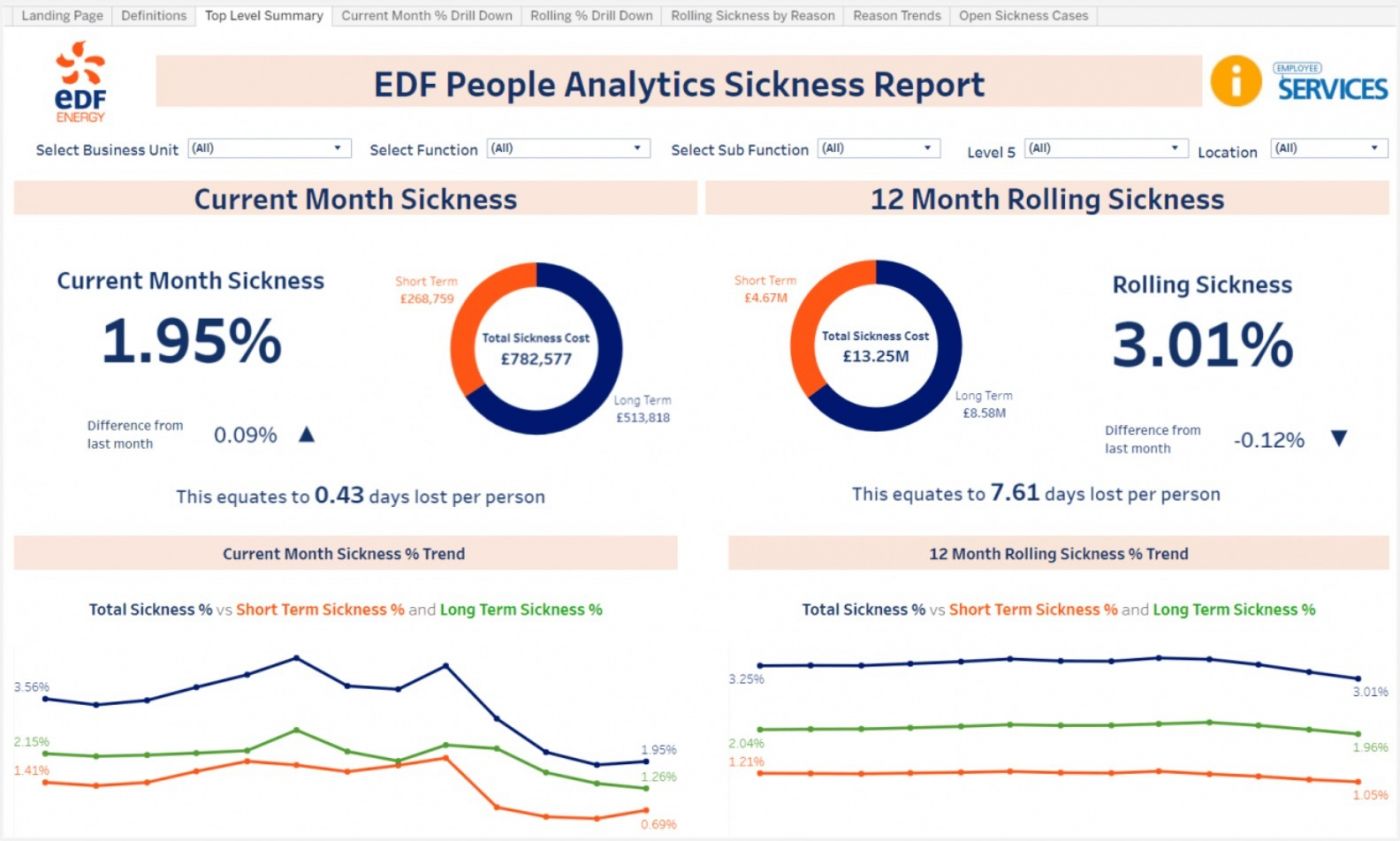
EDF makes informed, data-driven decisions across HR operations with Tableau
Tableau’s extensive security features give full control of data access
Self-service analytics cuts ad-hoc reporting requests by over 50 percent
Access to key data insights improves operational efficiency across the business
EDF Energy is the UK’s largest producer of low-carbon energy and the country’s biggest electricity supplier by volume, powering more than 5.5 million homes and businesses.
Here, Ross Watkins, People Analytics & Reporting Manager at EDF, discusses how the company has used Tableau to harness the power of data across its human resources (HR) operations. Ross shares how they turned this information into a strategic asset that employees can use to make more informed, data-driven decisions, every day.
What role does data play at EDF?
Data has always played a major role at EDF - and, as the emphasis on digitisation has increased over time, it’s become more important than ever. However, just a few years ago, we were almost paralysed by it. Huge amounts of data were being collected across the business, but we didn’t have the right tools in place to derive real value from it. We knew we needed a new analytics solution that could unlock this value and make it more accessible on a day-to-day basis. We also needed to change the mindset of employees towards data as a whole, helping them to see it as a strategic asset rather than something to be scared of.
What HR data challenges were you facing before Tableau?
Every month, my team had to manually create over 900 HR reports for users across the business, containing information on key areas such as open job positions, new recruits and staff absences. Each report was compiled in Excel using data pulled from SAP and then distributed to the person requesting it via email. This time-consuming process was nearly a full-time job for six out of the eight members within the team. What is more, these reports contained very little in the way of analytical insights. There were no summaries or commentary about the data itself, many reports even contained the exact same data set, just with an additional column or filter added, depending on the specific needs of the recipient. We were essentially little more than a report factory.
Migrating to Tableau allowed us to replace the 900 manual reports with 13 central Tableau dashboards, each of which offers insights into a key area of HR operations.
How did Tableau help solve these challenges?
Migrating to Tableau allowed us to replace the 900 manual reports with 13 central Tableau dashboards, each of which offers insights into a key area of HR operations. This was an iterative process, but once we saw Tableau, we knew our end goal.
The dashboards can be accessed and analysed by relevant users whenever they want, significantly reducing the ongoing reporting burden. As a result, my team now has the capacity to conduct more strategic relational analysis that challenges the status quo and helps optimise data and information flow across the business.
Tableau’s accessibility and ease of use has also enabled many more employees to start self-serving their own analytics needs, contributing to an additional 50 percent drop in ad-hoc reporting requests. Using Tableau, HR Business Partners can explore hypotheses and answer questions on the spot during meetings, rather than taking questions away and referring them back to us, which takes considerably longer. This means they can react much faster to key trends and insights that are uncovered, greatly improving overall operational efficiency.
With more people now accessing and analysing data across the business, effective governance has become crucial. Thankfully, Tableau’s extensive security features give us full control over who is accessing every data set, ensuring we meet our compliance and data protection obligations at all times.
Thankfully, Tableau’s extensive security features give us full control over who is accessing every data set, ensuring we meet our compliance and data protection obligations at all times.
What are the next steps on your data journey?
We currently have several Tableau Server deployments across EDF and plan to consolidate them into our central HR deployment soon. Not only will this break down any remaining data silos in areas such as finance and marketing, it will make cross-referencing data much faster and easier than ever before.
Do you have any advice for other companies trying to foster a more data-driven culture?
Make sure you give people the means and motivation to work on data in their own terms. Tableau has been an enabler in this sense, sparking an initial interest that quickly takes on a life of its own when people realise just how much it can help them in their day-to-day decision making.
